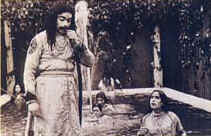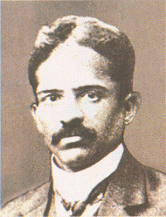CINEMA IN INDIA
|
The First in Indian Cinema - The first film to be screened in India was the Auguste and Louis Lumiere moving pictures in Bombay in 1895
- The first short film made in India was The Flower of Persia, directed by Hiralal Sen in 1898
- The first full length film in India was Raja Harishchandra, made by Dadasaheb Phalke in 1913
- The first Indian talking film was Alam Ara, made by Ardeshir Irani in 1931
- The Bengal Film Journalists’ Association, established in 1937, is the oldest association of film critics in India.
- The first colour film in India was Kisan Kanya, made by Ardeshir Irani in 1937
| Recent National Filmfare Awards,2010
Bollywood marked its stamp on the 57th National Film Awards as Amitabh Bachchan won the best actor award for his performance in “Paa” and Aamir Khan- starrer “3 Idiots” was adjudged the best popular movie.
However, it was Malayalam drama “Kutty Srank” which walked away with five awards, including the best feature film.
“Kutty Srank”, with Mammoothy in the lead, also won awards for best cinematography, best screenplay, best costume and a special jury recognition, which it shared with Bollywood hit “Kaminey” and Malayalam film “Kerala Varma Pazhassi Raja”.
Raykesh Omprakash Mehra’s “Delhi 6″, shot in the bylanes of Old Delhi, bagged the Nargis Dutt award for best feature film on national integration while Shyam Benegal’s “Well Done Abba” was chosen as the best film on social issues.
R Balki’s “Paa”, was also named the best Hindi film, besides winning recognitions in the best supporting actress category (Arundhuti Nag) and best make-up (Christein Tinsley and Dominie Till).
Amit Trivedi got the best music director award for Anurag Kashyap’s “Dev-D”, a modern take on Sarat Chandra Chattopadhyay’s classic “Devdas”.
The emotional number ‘Behti hawa sa tha woh’ from “3 Idiots” bagged the best lyrics award for Swanand Kirkere.
Ananya Chatterjee was named the best actress for her role in the Bengali film “Abohoman“, which also fetched the best direction award for Rituparno Ghosh and best editing for Arghyakamal Mitra, besides being adjudged the best Bengali movie.
|
|
|
|
THE FATHER OF INDIAN CINEMA
Phalke's entry into films was entirely accidental, a momentary love affair which became the passion of a lifetime. Inspired by The Life Of Christ (1910), which he saw at the America India Picture Palace at Sandhurst Road in Bombay on December 25, 1910, Dadasaheb Phalke was fired with the ambition of making a story-film based on the life and doings of Lord Krishna. This was not the first time that he was seeing this new art form for he had made several forays into the tent cinemas before this. This time, however, the impact was different because fate had manoeuvred him into a curious position. He had just quarrelled with Seth Purushottam Vishram Mavji, his partner at the Laxmi Art Printing Works, and had quit the press, vowing never to return to the printing profession. His future, therefore, loomed ahead like a big question mark.
In a sense, Phalke was ideally suited for the newly-emerging medium of cinema. A graduate of the J.J. School of Arts in Bombay and the Kala Bhavan in Baroda, Phalke was a man of many talents: drawing, painting, photography, printing, engraving, lithography, moulding, architecture, music, magic and even stage acting. Born on April 30, 1870 at Trimbak, on the outskirts of Nasik, Dhundiraj Govind Phalke was the son of Sanskrit scholar and college professor Dajishastri Phalke. He was educated at Trimbak, Bombay (where his father was working as Professor of Sanskrit at the Wilson College) and later Baroda where he got a good grounding in the Arts.
|
Cinema awards
|
|
|
|
| National Film Awards | Directorate of Film Festivals,(Ministry of I&B, Govt. of India) | 1954 | The National Film Awards are classified into the Golden Lotus Award and the Silver Lotus Awards. |
| Bengal Film Journalists’ Association Awards | Govt. of West Bengal | 1937 | The Bengal Film Journalists' Association is the oldest Association of Film critics in India, founded in 1937, by the inspiration and determination of the handful of pioneers amongst the then thin section of scribes that were drawn to film journalism with a lofty mission to serve the developing film journalism and film industry. |
Filmfare Awards | Filmfare | 1954 | Filmfare Awards are the oldest and most prominent film awards given for Hindi films in India. They are given annually to honour Bollywood`s best talents and provide encouragement and incentive to the Hindi motion picture industry. The Filmfare Awards were first conceived in 1953. In the first Filmfare Awards function, held on 21st March 1954, only five awards were presented. Do Bigha Zameen was the first movie to win the Filmfare Award for the best film. The first four winners for other categories were: Bimal Roy for direction of Do Bigha Zameen, Dilip Kumar for his performance in Daag, Meena Kumari for her performance in Baiju Bawra, and Naushad for his music in Baiju Bawara. Filmfare Awards are given in the following categories. |
| International Indian Film Academy Awards
| Wizcraft International Entertainment Pvt. Ltd. | 2000 | Started in 2000, IIFA or International Indian Film Academy Awards promotes Indian cinema at an international level. The promotion of Indian cinema globally has benefited its fans across the world. Such an endeavor has also enabled India to showcase its talent to the rest of the world.
The first IIFA awards were held at Millennium Dome, London in 2000. Since then it has been held at different venues, such as, Sun City (2001), Malaysia (2002), Johannesburg (2003), Singapore (2004), Amsterdam, Netherlands (2005), Dubai (2006) and Yorkshire (2007). In 2008 IIFA was organized at Bangkok, Thailand (2008). |
| Nandi Awards
| Govt. of Andhra Pradesh | 2002 | The Nandi Awards is the Prominent award ceremony, presented annually in Andhra Pradesh, India for Telugu cinema and Television by the state government of Andhra Pradesh. "Nandi" means "bull", the awards being named after the big granite bull at Lepakshi — a cultural and historical symbol of Andhra Pradesh. Nandi Awards are presented in four categories: Gold, Silver, Bronze, and Copper. A variant, Nandi Natakotsavam Awards for Theater is also given every year by the Andhra Pradesh government for social, mythological and poetic Dramas. |
|
|
Awards instituted under the National Film Awards
| Award | Category |
|
| Dadsaheb Phalke Award | Lifetime contribution to cinema The first recipient of the Dadasaheb Phalke Award was actress Devika Rani Roerich. |
|
| Indira Gandhi Award | Best first film of a director Golden Lotus Award, given to a feature film director's first film 2010 ---Lahore -- Sanjay Puran Singh Chauhan |
|
| Nargis Dutt Award | Best film on national integration Silver Lotus, given to an Indian feature film director, for the best film relating to National Integration in India. 2010---Delhi-6 |
|
| Best Book on Cinema | I n the year 1982 for the first time the Tamil book on cinema named as Thamizh Cinemavin Kathai written by Aranthai Narayanan Tamil won the award. 2009 ---Bollywood Melodies--- Ganesh Anantraman |
|
| Best film critic | The National Film Award of India (Silver Lotus Award) for Best Film Critic is given for Best Criticism of Indian Cinema. 2010 C.S.Venkiteswaran |
|
Cinema institutes in India
| Institute | Location | Established |
| Asian Academy of Film and TV Asian Academy of Film and TV or AAFT is a film school that took a holistic and realistic approach in teaching all the intricacies of filmmaking. The film school training is not limited to only classrooms and lectures on theories and techniques. At AAFT the faculty have adopted an all-inclusive training method with equal significance on the practical training of film making and acting. The Asian Academy of Film believes that training and skill building are quite essential in the field of illustration media, Asian Academy of Film and TV has been imparting education and training in the art and craft of film making in television presentation since 1993. | Noida | 1993 |
| Film and Television Institute of India Film and Television Institute of India (FTII), is an autonomous Institute under the Ministry of Information and Broadcasting, Govt. of India. It is fully aided by Central Government of India. It is situated in the premises of the erstwhile Prabhat Film Company in Pune, India. Since its inception in 1960, FTII has become India's premier film and television institute, with its alumni becoming biggest known actors and directors in the Indian film industry. | Pune | 1960 |
| Whistling Woods International Promoted by Filmmaker Subhash Ghai, Mukta Arts Limited and Filmcity Mumbai, Whistling Woods International is Asia’s largest film, television | Bombay | 2006 |
| Mindscreen Film Institute | Chennai | 2006 |
| Satyajit Ray Film and Television Institute SRFTI is the premier institute of India for film training which stands inline with Film and Television Institute of India (FTII) for its quality of education and reputation in the Indian film industry. | Calcutta | 1995 |
NFDC
National Film Development Corporation of India is the central agency established to encourage the good cinema movement in the country. The primary goal of the NFDC is to plan, promote and organize an integrated and efficient development of the Indian film industry and foster excellence in cinema. Over the years NFDC has provided a wide range of services essential to the growth of Indian cinema. The NFDC (and its predecessor the Film Finance Corporation) has so far funded / produced over 300 films. These films, in various Indian languages, have been widely acclaimed and have won many national and international awards.



Pretty useful... Thanks
ReplyDelete